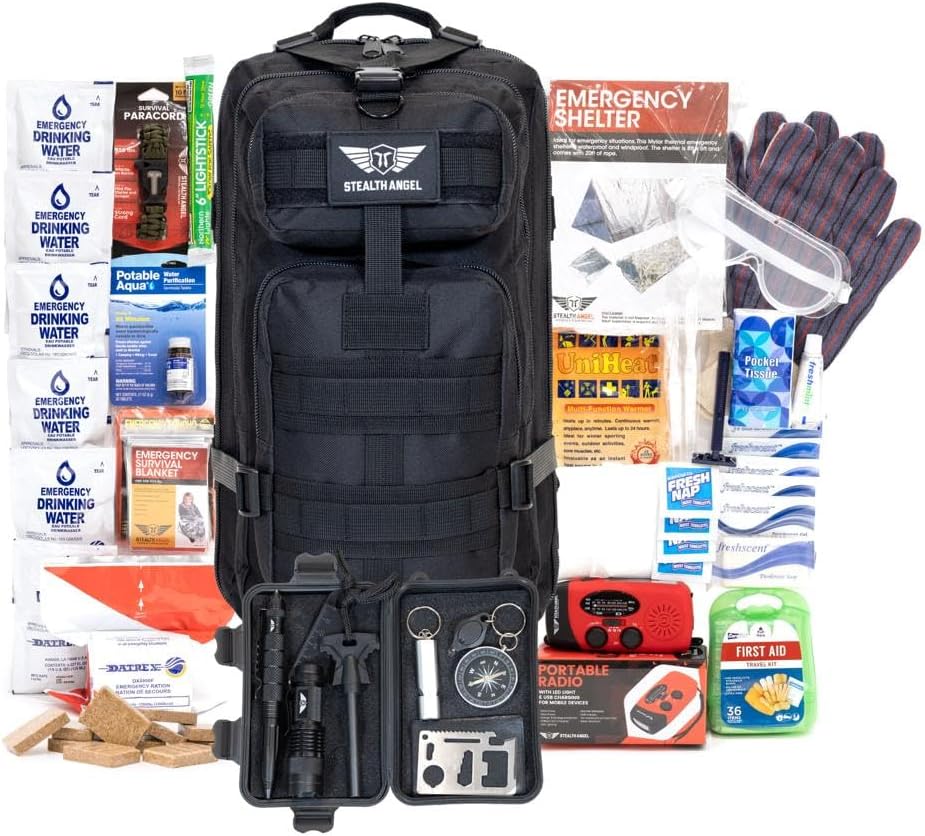
When disaster strikes, being prepared can mean the difference between life and death. Whether it's a natural catastrophe, civil unrest, or a grid-down scenario, knowing how to react and what to do can help you stay alive and protect your loved ones. This guide will cover the types of disasters that could occur in the United States and provide essential survival tips for each situation.
Types of Disasters and How to Survive Them
1. Natural Disasters
Natural disasters are some of the most common SHTF scenarios. These include hurricanes, tornadoes, earthquakes, wildfires, floods, and winter storms.
Hurricanes
Have an emergency kit ready, including food, water, batteries, flashlights, and first-aid supplies.
Secure your home by boarding up windows and reinforcing doors.
Evacuate if necessary and know the safest routes ahead of time.
Store extra fuel and cash in case of power outages.
Tornadoes
Identify a safe shelter, such as a basement or interior room with no windows.
Keep a weather radio handy for alerts.
If caught outside, find a low-lying area and cover your head.
Earthquakes
Drop, cover, and hold on during shaking.
Keep emergency supplies in multiple locations in case of building collapse.
Be prepared for aftershocks.
Have a fire extinguisher on hand in case of gas leaks and fires.
Wildfires
Create a defensible space around your home by clearing flammable materials.
Have an evacuation plan and multiple exit routes.
Keep an emergency bag packed and ready to go.
Wear protective clothing and an N95 mask to avoid inhaling smoke.
Floods
Avoid driving through floodwaters; just six inches of water can knock a person down, and two feet can sweep a car away.
Move to higher ground immediately.
Have a waterproof emergency kit.
Store important documents in a waterproof container.
Winter Storms
Keep an emergency heater, blankets, and warm clothing.
Have a backup power source like a generator or wood stove.
Avoid travel unless absolutely necessary.
Stock up on food and water in case of extended power outages.
2. Man-Made Disasters
These disasters include power grid failures, economic collapse, civil unrest, and nuclear threats.
Power Grid Failure
Have solar-powered or hand-crank devices for light and communication.
Stockpile non-perishable food and water.
Learn how to purify water from natural sources.
Have a backup heat source in case of prolonged outages.
Economic Collapse
Store barter items like precious metals, alcohol, and ammunition.
Learn self-sufficient skills such as gardening, hunting, and food preservation.
Diversify your income streams to be less dependent on traditional jobs.
Form community alliances for safety and trade.
Civil Unrest
Stay aware of local news and avoid hot zones.
Keep a low profile and do not draw attention to yourself.
Have a bug-out plan in case you need to leave quickly.
Arm yourself legally and know how to defend your home.
Nuclear Threats
Know the nearest fallout shelter locations.
Keep potassium iodide tablets to protect against radiation.
Stay indoors and seal off windows and doors if fallout is expected.
Have at least two weeks’ worth of food and water stored in a radiation-proof location.
3. Pandemics and Biological Threats
Stockpile medical supplies and personal protective equipment (PPE).
Have a long-term food and water supply to minimize exposure.
Learn first aid and natural medicine alternatives.
Maintain strict hygiene and sanitation protocols.
General Survival Tips for Any SHTF Scenario
Regardless of the disaster, these survival fundamentals will keep you prepared:
Bug-Out Bag: Always have a packed bag with essentials like food, water, fire-starting tools, first aid, and self-defense items.
Bug-In Plan: Sometimes, staying home is safer. Secure your property and stockpile necessary supplies.
Water Storage and Purification: Store at least one gallon per person per day and have ways to filter and purify water.
Food Storage: Keep a minimum of three months’ worth of non-perishable food.
Self-Defense: Learn how to use firearms and non-lethal self-defense tools responsibly.
Survival Skills: Bushcraft, first aid, navigation, and shelter-building skills can be life-saving.
Final Thoughts
Surviving an SHTF situation requires preparation, knowledge, and the ability to adapt to changing conditions. The more prepared you are today, the better your chances of making it through any crisis that may come. Start building your survival plan now and stay vigilant—because when disaster strikes, it’s those who are ready that will survive.

No comments:
Post a Comment